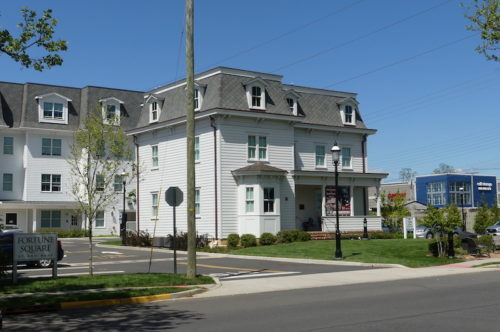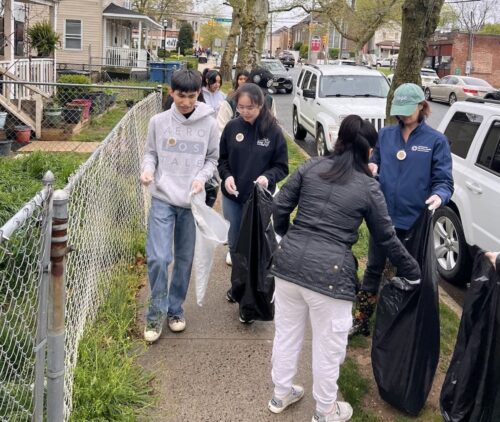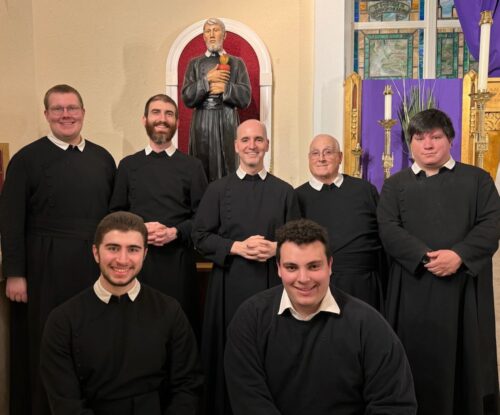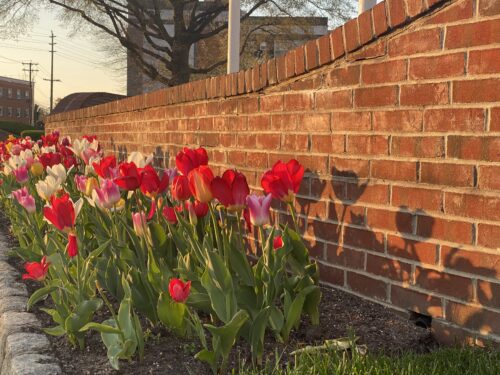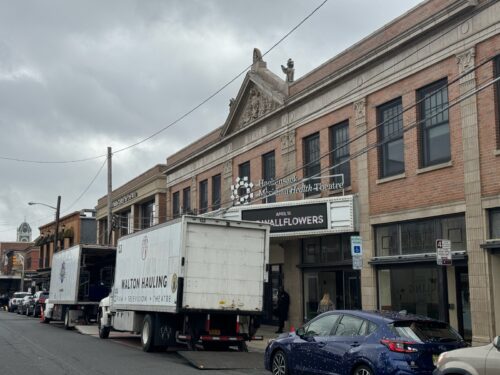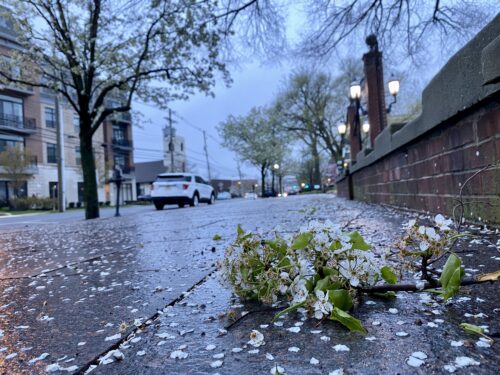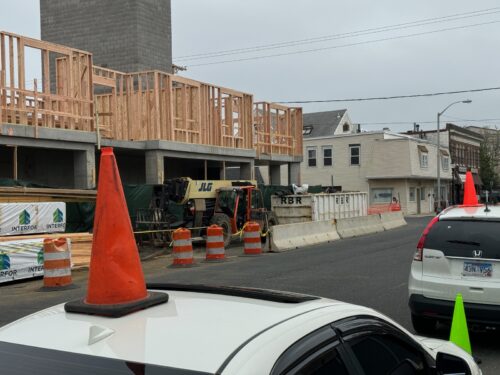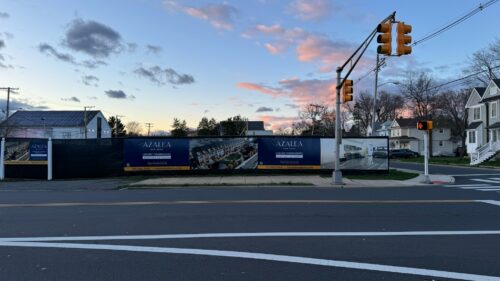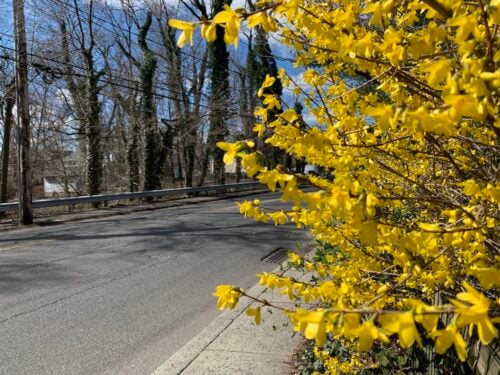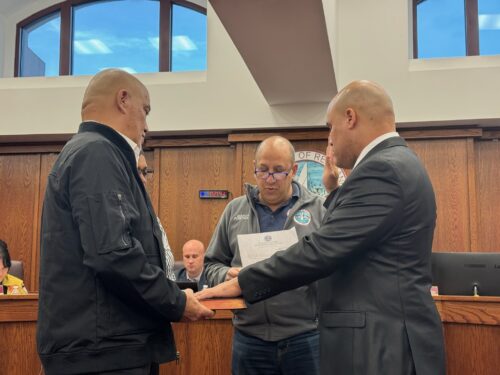To enlarge the photo display, start it, then click the embiggen symbol in the lower right corner. To get back to redbankgreen, hit your escape key.
By EVAN SOLTAS
While it gets attention from a few devoted visitors, there’s a distinct sense that the Rumson Burying Ground has been largely forgotten by the public.
Cars whip by on Rumson Road, but time here isn’t measured in minutes and seconds. One sees its passage in the dark stains on headstones, in the termite tubes that have slowly consumed one of the site’s remaining wood grave markers, and in the haunting inscriptions that date back to 1722.
Captain Hartshorne Price, died 1849.
Eleazer Parmly, died 1842.
Huldah Borden, died 1883.
For all its stillness, however, the graveyard at the corner of Conover Lane has been dragged not for the first time into the modern world by a dispute over its maintenance.
Dead men may tell no tales, but here, they are not entirely silent.
The Borough of Rumson, the site’s current steward, took over legal responsibility for its care after First Union National Bank, which once administered its upkeep, effectively walked away on contractual obligations.
In the process, Rumson took custody of a $20,000 trust established in 1955 with a $10,000 investment by Rumson resident Thomas McCarter . His daughter, Madeleine, left an additional $10,000 under her will in 1978. But by 2000, the trust had withered to $328.51. That’s when Bill McCarter, also a Rumson resident and Thomas McCarter’s grand-nephew, sued First Union. The bank settled, and handed the account over to the borough.
But the only funds disbursed since the settlement have been $795 in attorney fees paid to Bill McCarter himself in 2003. The balance sits in an interest-bearing account, according to Rumson chief financial officer Helen Graves. Earnings have gone into the borough’s general fund, instead of toward the cemetery’s conservation, she acknowledged.
That irks McCarter, whose family name dominates a large white mausoleum there. He believes Rumson is not fulfilling its obligations.
“It would appear to me that the borough accepted the $20,000 from the lawsuit and has not kept up their end of the bargain, instead relying on the Boy Scouts to clean it once a year,” he told redbankgreen.
A decade ago, then-mayor Charles Callman commended McCarter for his suit against First Union, and assured him in a letter that the burying ground would be maintained, calling that responsibility the borough’s “moral obligation.”
The burying ground, however, is no stranger to protracted periods of neglect. Fallen trees and branches repeatedly have mangled the cemetery’s black iron fence. Ivy and weeds have swallowed up many of the headstones. Others are no longer upright, their pieces now strewn across the grass.
But Rumson’s Public Works Department does maintain the site, usually on a quarterly basis, using funds from its general budget, said Mayor John Ekdahl.
“The borough is holding the $20,000 in trust, saving it in the event that major maintenance say if a large tree was to come down, or to replace a fence is needed,” Ekdahl said. “By wrapping it in with the list of properties maintained by the borough, it has not cost us as much as if we were to separately contract out that service.”
redbankgreen visited the site three times over the last year, and found there has been upkeep. A fence, previously in pieces and lying on the ground, had been righted, although haphazardly. Dirt filled a large hole at the cemetery’s edge where a tree’s roots and stump had been pulled out of the ground.
But one small stone grave marker, which had been dislodged by the downed tree, is now itself missing from the cemetery.
Neighbors report that they have seen borough employees maintaining the cemetery.
“The town is very responsive in cleaning things up after storms and such,” said Sarah Andreski, who lives on Conover Lane, opposite the cemetery.
Of course, too much TLC might take away from the otherworldly spirit of the place.
“If you clean it up too much, I would think that it loses its character,” said Andreski.
McCarter has not been the only one to take matters into his own hands due to what he perceives as long interims of neglect. Several Hance family headstones appears to have replaced with new ones in recent years.
Local historical groups, seeking to catalog the headstone inscriptions before any further decay, have also ventured into the burying ground and published their documentation online. Beneath the ivy, moss, and water stains, they feel, is a glimpse of Rumson’s past, one that few of its modern residents would recognize.
George H. Moss, who was the borough’s historian until his death in 2009, hailed it as a site worth preserving in the anthology Town by Town: Impressions of Monmouth County, calling it a “landmark” graveyard thought to have been established before 1700.
Then, Rumson was made up of a handful of farms, a port and a tavern. According to Moss and other sources, life here went on little changed from 1665, when it was first settled, until a rush of high-end development that began in the 1870s.
The 200-grave cemetery now brims with Rumson’s oldest families, including the Bordens, Corlies, Hances, Traffords, Wardells, and Whites. Their names, many of which now designate local streets, make this cemetery almost a road map for today’s Rumson.
Some local residents, largely history buffs and amateur genealogists are agitating for attention to the site.
“This cemetery should definitely qualify for historic landmark status at the state, if not the national level, where it could receive more reliable funding support,” said Ocean resident Michael Weber, a history teacher who became active in local history and preservation after his retirement. “With its headstones dating back nearly 300 years, there’s no question that more needs to be done.”



